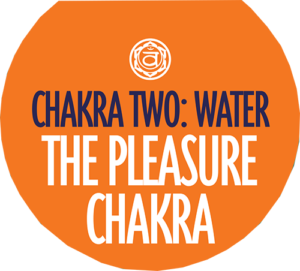
WELCOME TO to the second chakra: your center for pleasure, fun, movement, and feeling. The purpose here is to get things moving: to get your body moving in general, to move the energy inside, and to joyfully move your life forward.
Pleasure invites us to expand, while pain makes us contract. Opening to pleasure in the second chakra, not only makes us feel happier and more expansive, but it gets the subtle energy moving through the body, soothing and releasing blockages.
So instead of “working” on this chakra, try “playing!” Go out and get moving! Dance, sing, shake, feel, and open to the movement of your life force. Let the rivers within you flow to the ocean of bliss, and this will eventually move your energy to the other chakras as well.
The name of the second chakra is Svadhisthana, which means “one’s own sweet place.” Use these exercises to find your own place inside where you feel and experience deeply.













